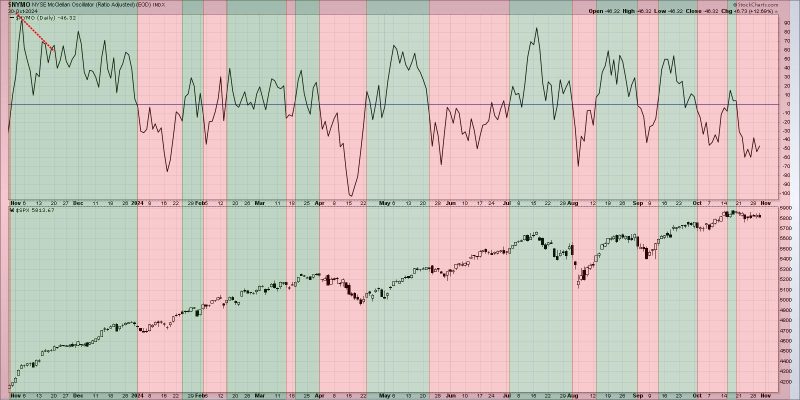
Bull Market Brink: Are Breadth Divergences the Tell-Tale Sign?
In the world of finance and trading, the concept of breadth divergences is a topic that often sparks interest and speculation among investors. These divergences occur when different components of a market index, such as individual stocks or sectors, exhibit conflicting trends compared to the overall market. While they can provide valuable insights into the underlying strength or weakness of a market rally, the interpretation of breadth divergences is not always straightforward. This has led to much debate among analysts and traders regarding their significance and predictive power.
One common interpretation of breadth divergences is that they can serve as a warning sign of a potential reversal in the market trend. For instance, if a broad market index like the S&P 500 is reaching new highs, but a considerable number of individual stocks within the index are failing to keep pace, it could indicate underlying weakness in the market. This lack of participation from a significant portion of stocks could suggest that the rally is not as robust as it may initially seem.
However, it is crucial to exercise caution when interpreting breadth divergences as a signal of an impending market downturn. Just because there is a lack of uniformity in the performance of individual stocks does not necessarily mean that a major market correction is imminent. Market breadth indicators are just one tool among many that investors use to assess the health of the market, and they should be considered alongside other factors such as technical analysis, economic indicators, and market sentiment.
Moreover, breadth divergences are not always reliable predictors of market direction. There have been instances in the past where these divergences have occurred without leading to a significant market sell-off. Therefore, it is essential for investors to exercise prudence and avoid making hasty decisions based solely on diverging breadth indicators.
In conclusion, while breadth divergences can offer valuable insights into the internal dynamics of the market, they should be used judiciously and in conjunction with other indicators to form a comprehensive view of market conditions. Investors should be wary of over-relying on breadth divergences as a definitive signal of the end of a bull market, as their predictive power can be limited. As always, conducting thorough research and analysis, and maintaining a diversified investment strategy, are key to navigating the complexities of the financial markets successfully.
